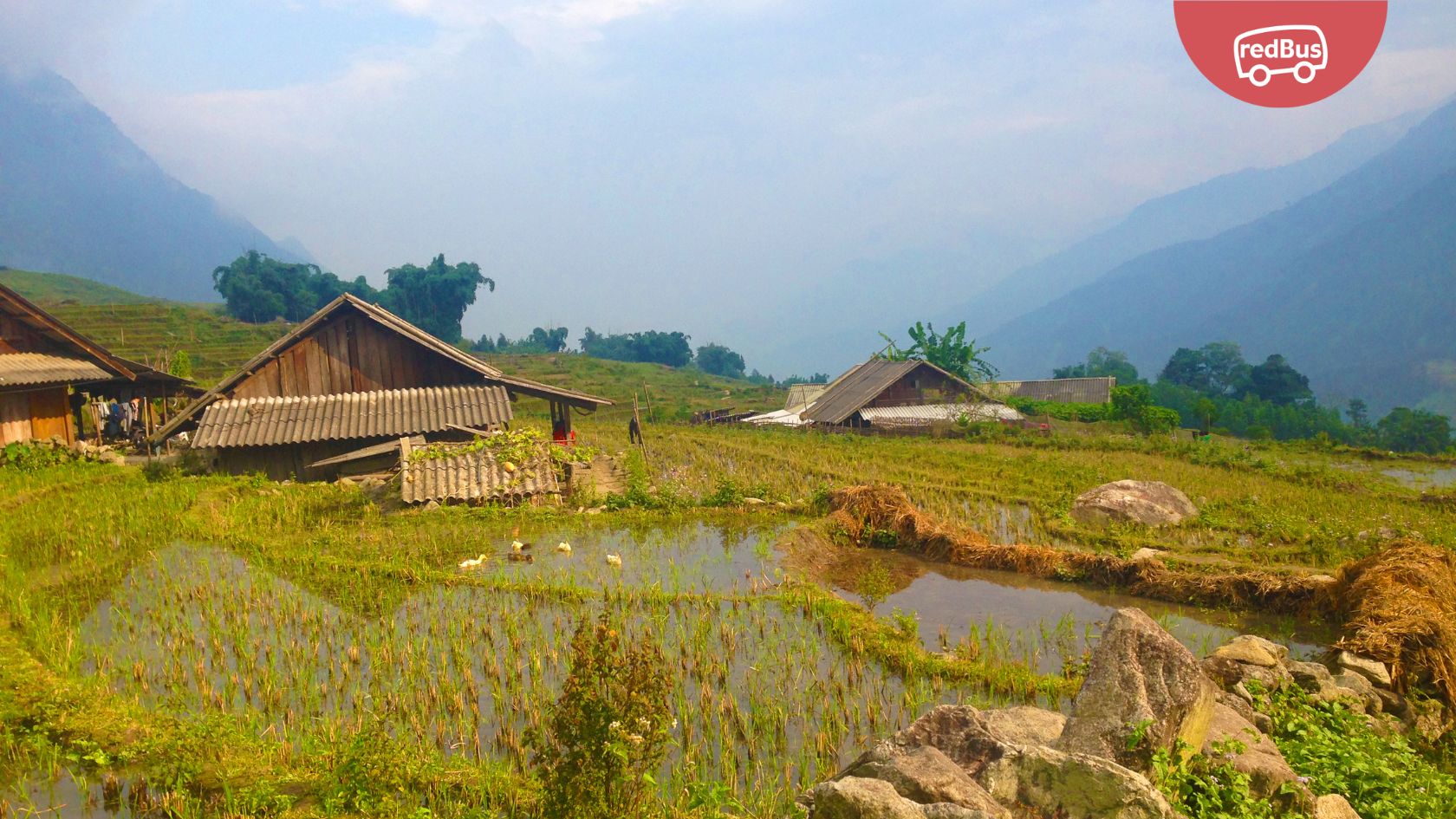Nestled in the majestic mountains of northern Vietnam, Sapa is a must-visit destination renowned for its terraced rice fields, ethnic diversity, and breathtaking landscapes. If you’re planning to travel from Hanoi to Sapa, this guide will provide detailed insights into the best modes of transport, including buses, trains, and private options.
How Far is Sapa from Hanoi?
- Distance: Approximately 320 km (199 miles).
- Travel Time: 5 to 9 hours, depending on the mode of transport.
Transport Options: Hanoi to Sapa
1. Hanoi to Sapa by Bus and Limousine
Buses are the most popular choice for travelling between Hanoi and Sapa due to their affordability and convenience. Ticket prices for a bus from Hanoi to Sapa range between 200,000 VND and 300,000 VND. You can choose from standard buses, sleepers, or luxury limousine cars in Vietnam.
Advantages of Taking a Bus or Limousine to Sa Pa :
- Direct routes with minimal transfers.
- Comfortable sleeper and limousine bus options.
- Multiple departure times throughout the day.
- Multiple boarding and drop-off points. Check the map for locations of boarding and drop-off points for buses to Sa Pa.
Ha Noi to Sa Pa Bus Operators and Schedules
| Bus/ Limousine Operator | First Bus | Last Bus | Travel Time | Average Ticket Price | Number of Trips |
|---|---|---|---|---|---|
| Luxury Van Limousine | 05:50 | 23:00 | 6 hrs 30 mins | ₫ 400.000 | 86 |
| HK Open Tour | 06:25 | 23:09 | 4 hrs 55 mins | ₫ 420.000 | 26 |
| G8 Open Tour | 06:50 | 23:50 | 11 hrs 47 mins | ₫ 420.000 | 21 |
| Inter Bus Lines | 06:00 | 21:15 | 5 hrs 45 mins | ₫ 290.000 | 11 |
| King Express | 06:30 | 21:30 | 6 hrs 35 mins | ₫ 300.000 | 6 |
2. Hanoi to Sapa by Train
Taking the train offers a unique and scenic experience, perfect for travellers seeking a slower pace. Trains from Hanoi to Sa Pa take around 8 hours. You can relax in cosy, comfortable cabins with a slightly higher price point or choose a lower-budget option. However, when travelling on a train to Sa Pa, you will have to deboard at Lao Cai. Further, you must take a 1-hour bus or taxi ride to Sapa.
Advantages of Taking a Train:
- Authentic Vietnamese travel experience.
- Scenic views of the countryside.
- Comfortable sleeper cabins for overnight journeys.
Popular Train Services:
| Operator | Departure Times | Ticket Price (VND) | Features |
|---|---|---|---|
| Victoria Express | 10:00 PM | 1,200,000 – 1,800,000 | Luxury cabins with private bathrooms |
| Fansipan Express | 10:00 PM | 850,000 – 1,200,000 | Cozy sleeper cabins |
| Sapaly Express | 09:50 PM | 650,000 – 1,100,000 | Clean cabins with shared facilities |
3. Hanoi to Sapa by Car
Hiring a private car is ideal for families or groups who value flexibility. The best part of a drive to Sa Pa is the road trip experience, where you can stop at attractions along the way. You won’t have to wait for public transport or a cab for a transfer to your accommodation in Sapa.
However, a self-drive to Sa Pa will be very expensive compared to a journey on buses and trains.
Estimated Cost:
- Around 2,500,000 – 3,500,000 VND for a round trip.
4. Hanoi to Sapa by Bike
Motorbiking to Sapa is an adventurous option for thrill-seekers.
- Requires experience navigating mountain roads.
- Rent a bike in Hanoi for 120,000 – 200,000 VND/day.
- Popular Routes:
- Noi Bai – Lao Cai Expressway (320 km, scenic but steep).
- National Highway 32 (455 km, passes through Mu Cang Chai).
Why Not Fly from Ha Noi to Sapa?
Flights are not a feasible option for travelling to Sapa because:
- There’s no airport in Sapa or Lao Cai.
- You’d need to fly to Dien Bien Phu, far from Sapa and then take an onward journey to Sapa. This will only extend your travel.
Best Time to Visit Sapa
Spring (March-May) and Autumn (September-November) with clear skies and pleasant weather are the best times to enjoy the scenery in Sapa without any weather obstructions.
Due to slippery roads and landslides, refrain from making any plans in the rainy season (July-August).
Things to Do in Sapa
Explore Fansipan Mountain
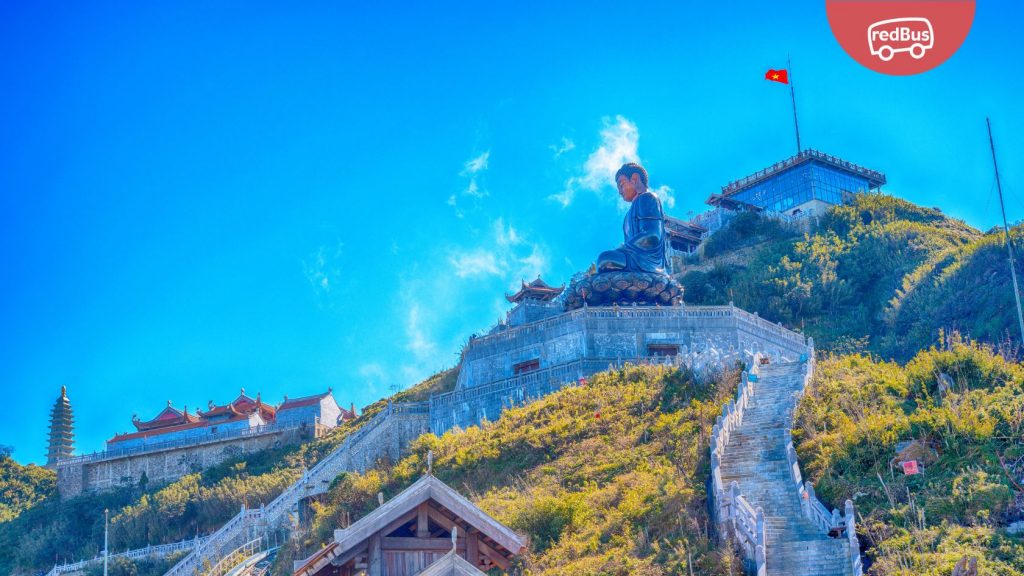
Known as the “Roof of Indochina,” Fansipan is the tallest mountain in the region at 3,143 meters above sea level. Reaching its summit is a must-do for adventure enthusiasts and nature lovers. You can either embark on a challenging trek through lush forests and steep trails, which takes about 2-3 days or opt for a more relaxed experience via the Fansipan Cable Car.
The cable car offers breathtaking views of terraced rice fields, dense forests, and mist-covered peaks. At the summit, take in the panoramic views of the Hoang Lien Son mountain range and the surrounding valleys.
Visit Cat Cat Village
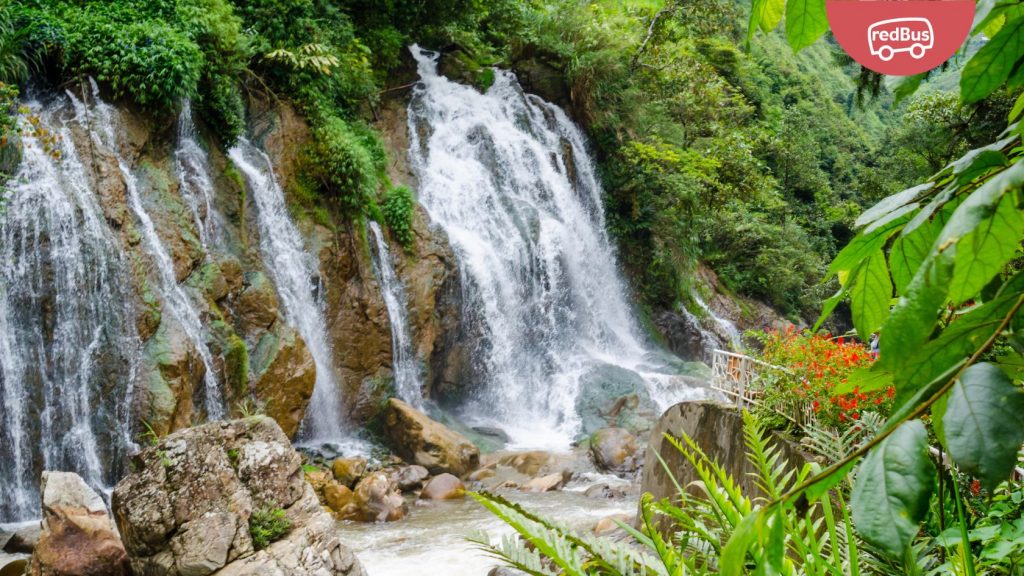
Nestled in the Muong Hoa Valley, Cat Cat Village offers a glimpse into the daily lives of the Hmong ethnic minority. This charming village is famous for its traditional wooden houses, handicrafts, and stunning natural scenery.
As you stroll through the cobblestone paths, you’ll encounter locals weaving intricate textiles, forging silver jewelry, and preparing delicious local dishes. The village is also home to the Cat Cat Waterfall, a serene spot ideal for photography and relaxation. A guided tour will enrich your visit with insights into Hmong culture and traditions.
Trek Through the Rice Terraces
Sapa’s terraced rice fields are among the most iconic in the world, and trekking through them is a highlight of any visit. Popular routes include the trails through Muong Hoa Valley, Ta Van Village, and Lao Chai Village. Each trail offers unique perspectives of the cascading rice fields, ranging from lush green in the growing season to golden hues during the harvest. Local guides often accompany trekkers, sharing stories about the region’s history and farming practices. The treks also provide opportunities to interact with ethnic minorities such as the Black Hmong and Red Dao, who call these valleys home.
Visit Silver Waterfall and Love Waterfall
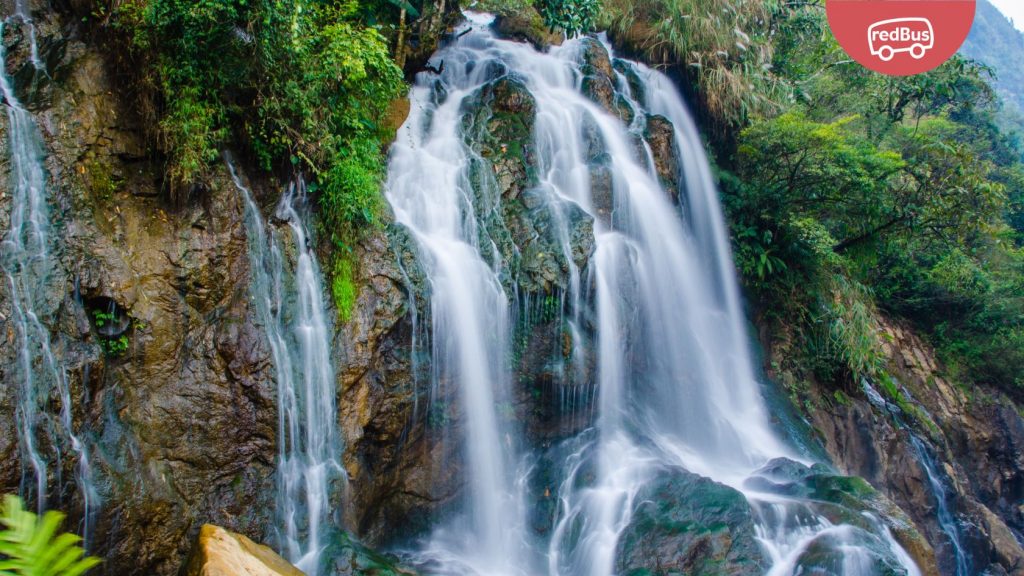
Located 12 kilometres from Sapa town, Silver Waterfall is a majestic 200-meter-high cascade shimmers like liquid silver against the rocky cliffs. It’s a peaceful spot to enjoy nature and take memorable photos. Nearby, Love Waterfall offers a romantic escape surrounded by verdant forests.
Legend has it that the waterfall was the meeting place of a fairy and a woodcutter, adding a touch of mystique to its beauty. A short trek through bamboo forests leads you to this picturesque spot, making it a favourite for couples and nature lovers.
Explore Sapa Town
The heart of Sapa is a vibrant blend of traditional culture and modern amenities. The Sapa Market is a bustling hub where local ethnic minorities sell handcrafted goods, fresh produce, and souvenirs. Visit the Stone Church, a French colonial landmark that adds a historical touch to the town. At Ham Rong Mountain, enjoy beautifully landscaped gardens and panoramic views of Sapa. The town also has several cafes and restaurants to enjoy local specialities like Thang Co (a traditional hotpot dish) and Sapa salmon.
Muong Hoa Valley
This valley is a haven for trekkers and photographers, offering some of the most stunning landscapes in Sapa. The valley is dotted with traditional villages, rice terraces, and meandering streams. A walk through Muong Hoa Valley immerses you in nature and introduces you to the rich cultures of the local ethnic communities. During the trek, you can visit ancient carved stones, believed to hold spiritual significance for the locals.
Heaven’s Gate
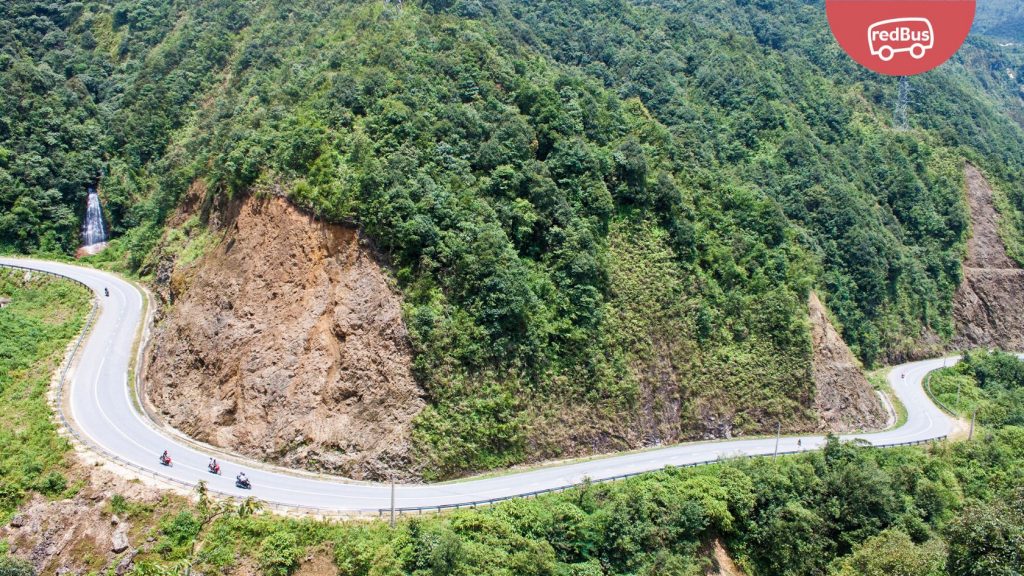
Heaven’s Gate is located on the Tram Ton Pass and offers one of the most spectacular viewpoints in Sapa. At an altitude of 1,900 meters, this spot provides sweeping views of the mountain ranges and valleys below. It’s a perfect place for sunrise or sunset photography. The area is also the starting point for the challenging Fansipan trek, making it a popular stop for adventurers.
Ta Phin Village
A short drive from Sapa town, Ta Phin Village is home to the Red Dao ethnic minority. Known for their traditional herbal baths and vibrant red headscarves, the Red Dao people offer unique cultural experiences. You can explore the village’s narrow trails, visit the Ta Phin Monastery, and learn about traditional textile weaving. Don’t miss the chance to soak in a herbal bath, which is said to rejuvenate both the body and mind.
These activities ensure that a trip to Sapa is both enriching and memorable, offering a perfect blend of adventure, culture, and relaxation.
Tips for International Travelers
- Currency: Use Vietnamese Dong (VND). Exchange at Hanoi banks for the best rates.
- Packing Essentials: Carry layers, sturdy shoes, sunscreen, and insect repellent.
- SIM Card: Purchase a local SIM (Viettel or Mobifone) for seamless navigation. Know more about the Best SIM Card in Vietnam for tourists
- Travel Documents: Always keep a copy of your passport and visa. Know more about Vietnam VISA.
Hanoi to Sapa bus is the most recommended option for the best mix of comfort and convenience. Alternatively, you can also book a Hanoi to Sapa limousine. Buses and limousines are faster than trains, affordable, and offer direct transfers to Sapa town. However, the train is an excellent alternative for a scenic and authentic Vietnamese experience. Whatever you choose, Sapa’s breathtaking landscapes await!
Start your travel plans today and secure your tickets on redBus for a safe and memorable holiday!
*T&C applied
